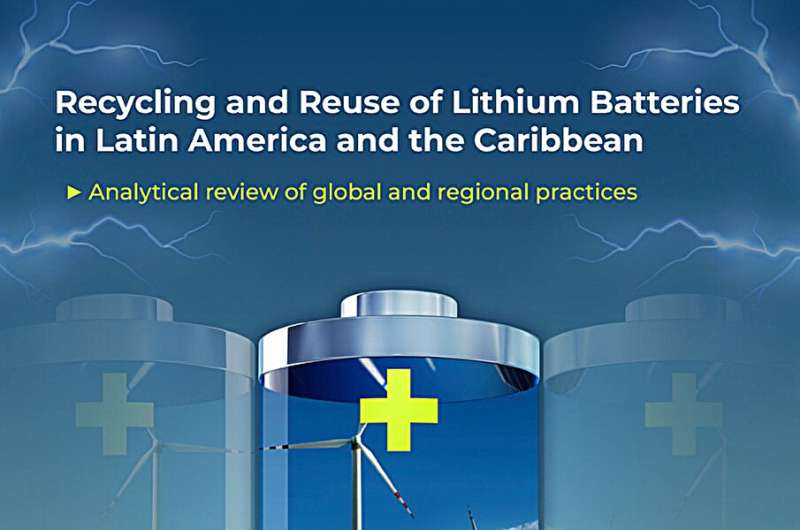
Reuse and recycling are core elements of a sustainable approach to used lithium-ion batteries in Latin America. This is essential to conserve valuable resources and avoid climate-damaging greenhouse gas emissions. The application of tried-and-proven best practices here would potentially avoid the disposal of up to two million tons of batteries as waste and enable up to 2.8 million tons to be recycled in the region by 2050.
An estimated 6.6–7.5 million tons of lithium-ion batteries will reach end-of-life in Latin America and the Caribbean between 2024 and 2050. At present, very few facilities are available to recycle these batteries in a safe and environmentally compatible way. As a result, about 90% of discarded batteries currently end up at waste dumps. Furthermore, many countries lack an effective legal framework that clearly regulates responsibilities for the collection and treatment of used and end-of-life lithium-ion batteries.
These are some of the findings of a study, conducted by the Oeko-Institut and MicroEnergy International on behalf of the Inter-American Development Bank, which reviews the state of the technology worldwide and examines practices for the management of end-of-life lithium-ion batteries. It also identifies the potential for a circular economy in the region and takes a more detailed look at local handling of lithium-ion batteries in four case studies on Colombia, Costa Rica, Chile and Mexico.
A legal framework: A key prerequisite for success
“The circular economy is just as important in Latin America as it is in Europe,” says Viviana Lopez, an Oeko-Institut researcher who specializes in global supply chains. “In order to facilitate sustainable management of lithium-ion batteries, governments in the region must establish reliable frameworks for investment in battery recycling. They must also set collection, processing and reuse quotas and provide targeted support for waste management stakeholders to adopt new technologies and expand their existing capacities.”
Within the region, Colombia is leading by example, applying regulatory provisions which establish a mandatory system of Extended Producer Responsibility (EPR). Manufacturers here are required to collect small-scale and industrial batteries from sources such as electromobility and send them for recycling. A network of innovative companies and a national working group on circular solutions for lithium-ion batteries are collaborating to drive forward the reuse and recycling of these batteries.
Reuse before recycling
The study also emphasizes the importance of a second life for used lithium-ion batteries that no longer operate at 100% percent capacity. For example, older batteries are classed as unsuitable for use in electric vehicles once their capacity has decreased to 70% or 80%. However, these batteries can be deployed very effectively in stationary power storage solutions, e.g., to store solar electricity or to provide emergency power storage in hospitals.
By prioritizing reuse or extended use, it is possible to prolong a battery’s service life by as much as 10 years, thereby conserving substantial quantities of the valuable resources required for new battery production. Extending the service life also has clear economic benefits: according to the optimistic scenario described in the study, there is potential for second use of up to 2.8 million tons of batteries in the study region, generating additional market value of around 11 million dollars.
“These approaches simultaneously ease the pressure on the extractive industry. The longer the batteries’ service life and the more efficient their end-of-life recycling, the more resources we can leave underground,” Viviana Lopez points out. “Coalitions of battery manufacturers, government authorities, waste disposal and recycling companies, distributors and environmental organizations can provide targeted support to ensure that takeback schemes operate efficiently.”
Lithium-ion batteries in Latin America
Due to the growth in renewable energy use and e-mobility, demand for lithium-ion batteries in Latin America and the Caribbean has surged. The region has set itself ambitious climate and renewables targets: for example, it aims to achieve a 550% increase in power generation from wind and solar by 2030 compared to 2015.
The use of battery storage is vital in reaching these targets. Furthermore, 67% of the world’s lithium reserves are located in the region, and while mining is an important economic factor in some areas, it also has adverse impacts on the environment and local communities.
